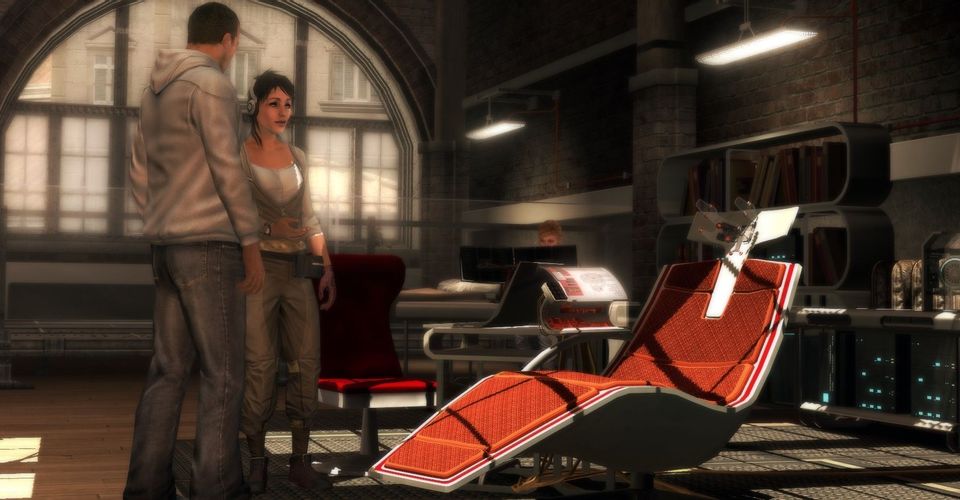How Assassin’s Creed Can Make The Animus Fun Again

In the years since protagonist Desmond Miles’ awakening in the first Assassin’s Creed, the Animus has been integral to the series’ premise. But as the story has gone on, it has been pushed more and more into the background of the main narrative. When Assassin’s Creed Valhalla was released in late 2020, it reignited the conversation about the Animus’ role in the AC universe and whether or not the series would be more fun without it.
The Animus was introduced as a bit of a surprise in the original Assassin’s Creed, which was marketed as a historical fiction game that let players fill the boots of members of the Assassin Order. This made it a bit of a shock when players woke up in a modern-day lab and learned they were actually playing as Desmond, living out the memories of his ancestor via the Animus. A machine created by the sinister Abstergo Industries, the Animus taps into an individual’s genetic memories, allowing them to experience the past in a VR simulation. Ubisoft implemented some interesting in-game quirks to the Animus, like language translation glitches and other bugs to the simulations (separate from Assassin’s Creed’s actual glitches), but none of that truly became a part of what makes Assassin’s Creed fun to play.
In the original trilogy and its spinoffs, the Animus created a playground for narrative tension, with Desmond having to escape Abstergo and stay on the run with the modern version of the Assassin Order. The Animus also introduced some interesting concepts to the lore, such as the danger of a user – like Assassin Clay Kaczmarek and a surprise character in Assassin’s Creed Valhalla – having their consciousness trapped in the Animus program itself. While it was interesting to see how the coding of the Animus program projects itself in Assassin’s Creed Revelations, players mostly saw it in cutscenes while the actual gameplay involved reliving more memories.
Why The Animus In Assassin’s Creed Needs A Revamp

In Assassin’s Creed Revelations, the Pieces of Eden do what the Animus could have done. The Apple of Eden that Ezio, the series’ most iconic protagonist, finds toward the end of the game allows him to speak directly to Desmond. This pushed the strict rules of the Animus to the side, offering an alternative (and more engaging) link to the past and present. The series also highlights the Pieces of Eden as weapons that can be used by or against the player, something the Animus doesn’t have the ability to do, which makes the Pieces more interesting.
From Black Flag to Valhalla, the Animus in Assassin’s Creed has been reduced to a quick explanation of how the past is being experienced by the player. The actual fun comes from exploring the ancient worlds, encountering the most famous people in history, and unravelling the mysteries of these ancient civilizations. The modern-day storyline in Assassin’s Creed, and by association the Animus, are afterthoughts that often kill the narrative momentum when the player is pulled out of the simulation. Though titles like Assassin’s Creed Valhalla attempt to play with the Animus via the Animus Anomalies, they are ultimately just side missions that become repetitive and less engaging as the game goes on.
While Assassin’s Creed is fully capable of being fun without the Animus, that doesn’t mean it has to go. There are standout moments that the Animus provides – such as the time glitches in Assassin’s Creed Unity, which involve outrunning a speeding train or climbing the Eiffel Tower during the Occupation of Paris. The series should either focus solely on the historical fiction and let the Pieces of Eden fully adopt the role of the Animus, or take the time to make the Animus sections in Assassin’s Creed fun and engaging by letting players interact with it in the same way they do the historical settings.
About The Author

















